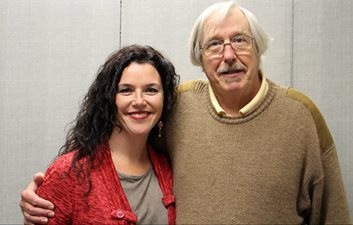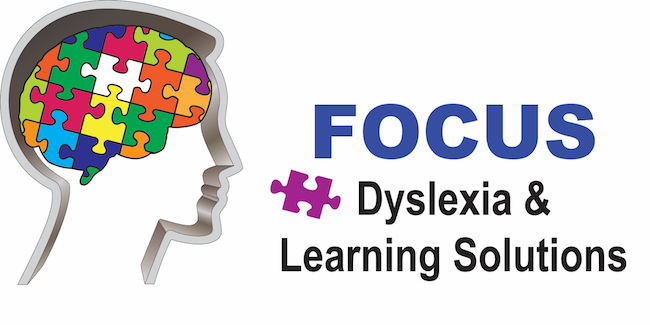In 1980, at age 38, Ronald Dell Davis overcame his own severe dyslexia when he found a way to quickly eliminate common perceptual distortions.
For the first time in his life, he could read and enjoy a book without struggling. To his surprise and delight, he soon learned that the simple mental exercise he had discovered for himself seemed to work just as well for other dyslexic adults who tried it out.
He soon realized that correcting perception was not enough; it was also necessary to eliminate the sources of confusion that triggered disorientation. For dyslexia, that meant a system for building strong word recognition and comprehension skills, geared to the dyslexic learning style.

Stephanie with Ron Davis, taken during her licensing.
After independent clinical research and working with experts in many fields, Ron Davis perfected his program for correcting dyslexia in adults and children. In 1982, Ron Davis and Dr. Fatima Ali, Ph.D, opened the Reading Research Council Dyslexia Correction Center in California, achieving a 97% success rate in helping clients overcome their learning problems.
In 1994, the first edition of the book, The Gift of Dyslexia was published. Within a year the book had been translated to several other languages, and Davis Dyslexia Association International (DDAI) was established to formally train other professionals to provide the same program throughout the world.
There are now hundreds of Davis Facilitators offering services in more than 30 languages and more than 40 countries worldwide. The basic ideas underlying the Davis Dyslexia Correction® program have also been extended to develop specialized programs for Attention Mastery, Math Mastery, and Autism.
What sets the Davis Method apart?
Ron Davis believes that dyslexia is a result of an inherent mental gift or talent. People who develop dyslexia think in pictures, rather than words; they are imaginative and creative; and they try to solve problems by looking at the whole picture, rather than working step-by-step. Davis Dyslexia Correction relies on using the mental talents that dyslexic people share to overcome the learning problems. To do this, students must follow a different approach to learning. When dyslexic students recognize their mental talents, they develop a renewed sense of self-esteem and confidence. When they start to employ study methods which capitalize on their talents, progress is very rapid.
Some of the ways that Davis Dyslexia Correction differs from other programs are:
1. The Davis method does not rely on instruction based on phonics.
Since dyslexic students think in pictures, they have difficulty thinking with the sounds of words, so it is hard for them to try to read by breaking words down into component sounds. Rather than trying to force students to use a method that is inherently difficult for them, Davis methods teach a visual and meaning-based approach that is much easier for dyslexic people to learn and use. This in turn leads to much more rapid progress than with traditional instruction, and most students become fluent and capable readers using the Davis strategies.
2. The Davis method does not employ repetition or drill.
Dyslexic students have a hard time remembering things that they do not fully understand. Repetition and drill are a waste of time for them, and only increases their frustration because they will not retain information unless they understand where it fits into the “big picture”.
The Davis method does not rely on physical devices such as colored overlays or large print books.
Dyslexia is a developmental learning problem, and is not a result of problems with vision or hearing. While some physical devices may seem to make reading or writing easier, the use of such devices does not help the dyslexic student to function normally.
3. The Davis method does not rely on medications or herbal treatments.
It is important for dyslexic students to take control of their own learning. Since dyslexia is not a disease or a psychiatric ailment, medications are not appropriate, and will only hinder the student’s learning abilities.
